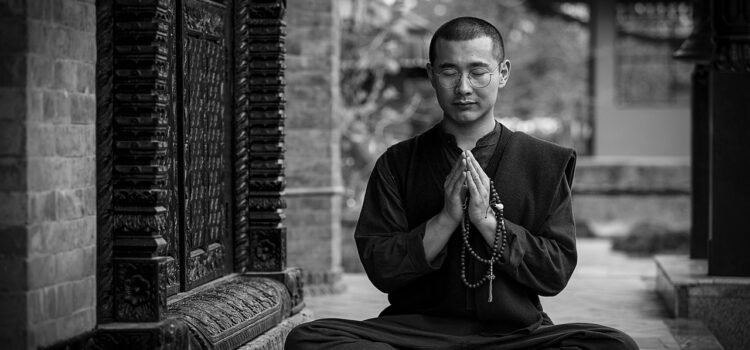Yoga, an ancient practice originating in India, has transcended geographical boundaries to become a global phenomenon. It encompasses various styles and approaches, each offering unique benefits to practitioners. Understanding the diversity of yoga practices not only enriches one’s knowledge but also helps in selecting the most suitable form based on individual needs and goals.
Understanding the Diversity of Yoga Practices
Yoga is diverse in its techniques, philosophies, and applications. From vigorous, physically demanding styles to gentle, meditative practices, there exists a yoga type for every preference and fitness level. This diversity allows individuals to tailor their yoga experience to enhance physical health, mental well-being, or spiritual growth.
What Makes Yoga Diverse?
The diversity in yoga arises from its historical evolution and adaptation across cultures. Different styles emphasize various aspects such as physical postures (asanas), breathing techniques (pranayama), meditation, and philosophical teachings. Each style offers a distinct approach to achieving harmony between body and mind.
Importance of Knowing Different Types
Knowing the different types of yoga empowers practitioners to choose a practice that aligns with their fitness goals, health conditions, and personal preferences. Whether seeking relaxation, strength-building, flexibility, or spiritual enlightenment, familiarity with various yoga styles enables individuals to make informed decisions about their wellness journey.
Hatha Yoga: The Foundation of Physical Practice
Hatha yoga, often referred to as the “yoga of force,” originated in medieval India around the 11th century. It combines physical postures (asanas) and breathing techniques (pranayama) to prepare the body for meditation and spiritual growth. The word “Hatha” itself means forceful in Sanskrit, symbolizing the effort required to achieve balance.
Historical Roots
The roots of Hatha yoga can be traced back to ancient texts like the Hatha Yoga Pradipika and the Gheranda Samhita, which detail practices aimed at purifying the body and mind. These texts codify the principles of Hatha yoga, including the use of asanas and pranayama to balance the subtle energies (pranas) within the body.
Focus on Balancing Energies
Central to Hatha yoga is the concept of balancing opposing forces: “ha” representing the sun and “tha” representing the moon. Through the practice of asanas and pranayama, practitioners aim to harmonize these energies to achieve physical health and mental clarity.
Asanas and Pranayama
Popular Poses and Their Benefits
Hatha yoga incorporates a wide range of asanas, from simple seated postures to complex stretches and inversions. Poses like Downward-Facing Dog (Adho Mukha Svanasana), Tree Pose (Vrksasana), and Cobra Pose (Bhujangasana) are practiced to improve flexibility, strength, and posture. Each pose offers specific physical benefits while promoting mindfulness and concentration.
Importance of Breath Control
Integrating pranayama techniques with asanas is crucial in Hatha yoga. Techniques such as Ujjayi breath (Victorious Breath) and Kapalabhati (Skull Shining Breath) help regulate breathing patterns, enhance oxygenation, and calm the mind. Breath control not only supports the physical practice but also deepens the meditative aspects of yoga.
Vinyasa Yoga: Flowing Through Movement and Breath
Vinyasa yoga is characterized by its fluid, dynamic sequencing of poses synchronized with breath. Unlike traditional Hatha yoga, which focuses on holding poses statically, Vinyasa links movement with inhalation and exhalation, creating a continuous flow of postures.
Linking Breath with Movement
The essence of Vinyasa lies in the synchronicity of breath and movement. Each transition from one pose to another is guided by a specific inhalation or exhalation, facilitating a seamless flow that cultivates mindfulness and concentration.
Creating a Fluid Practice
In Vinyasa yoga, the sequence of poses (vinyasa) varies, allowing for creative expression and adaptation by instructors. This variability keeps the practice engaging and challenging, catering to practitioners of different skill levels and physical abilities.
Benefits for Cardiovascular Health
The dynamic nature of Vinyasa yoga offers significant cardiovascular benefits. The continuous movement increases heart rate and circulation, promoting cardiovascular fitness and endurance over time.
Burning Calories Through Movement
Due to its active nature, Vinyasa yoga also aids in calorie burning and weight management. The combination of flowing movements and sustained postures engages major muscle groups, supporting metabolic function and fat loss.
Stress Relief and Mental Focus
The rhythmic breathing patterns and mindful movement in Vinyasa yoga help reduce stress levels and enhance mental clarity. Practitioners often report feeling more grounded and centered after a Vinyasa session, making it an effective practice for stress management and emotional well-being.
Ashtanga Yoga: Discipline and Progression
Ashtanga yoga is a structured and rigorous form that follows a specific sequence of poses (asanas) linked with breath (vinyasa). Developed by K. Pattabhi Jois, Ashtanga emphasizes discipline, strength, and flexibility.
Eight Limbs of Yoga
The practice of Ashtanga is rooted in Patanjali’s Yoga Sutras, which outline the eight limbs of yoga. These include ethical guidelines (yamas and niyamas), physical postures (asanas), breath control (pranayama), sense withdrawal (pratyahara), concentration (dharana), meditation (dhyana), and enlightenment (samadhi).
Role of Sequences (Series)
Ashtanga yoga is divided into different series of asanas, starting with the Primary Series (Yoga Chikitsa) and progressing to more advanced sequences like the Intermediate Series (Nadi Shodhana). Each series builds upon the previous one, offering practitioners a structured path for growth and mastery.
Commitment to Daily Practice
Central to Ashtanga yoga is the commitment to daily practice (sadhana). Practitioners are encouraged to practice six days a week, with Saturdays traditionally reserved for rest. This regularity fosters discipline, consistency, and deepens the physical and spiritual benefits of the practice.
Developing Strength and Flexibility
The repetitive nature of Ashtanga’s sequences develops muscular strength, endurance, and flexibility. Continuous engagement of the body through challenging asanas builds physical resilience and stamina over time.
Mental Benefits of Routine
Beyond physical fitness, Ashtanga yoga cultivates mental focus, resilience, and inner calm. The disciplined practice of breath-linked movement enhances concentration, reduces mental chatter, and promotes a meditative state of mind.
Bikram Yoga: Heat and Detoxification
Bikram yoga, also known as “hot yoga,” was developed by Bikram Choudhury in the early 1970s. It gained popularity for its practice in a heated room, typically set to 95-108 degrees Fahrenheit with high humidity levels. Despite its widespread appeal, Bikram yoga has been surrounded by controversy due to allegations against its founder.
Hot Room Yoga Concept
The heated environment in Bikram yoga is believed to enhance flexibility, facilitate detoxification through sweating, and promote circulation. The intense heat challenges practitioners physically and mentally, requiring focus and endurance.
Benefits of Sweating in Practice
Sweating profusely during Bikram yoga is purported to release toxins from the body, cleanse the skin, and improve overall metabolic function. This detoxification process is thought to support weight loss and enhance the body’s natural healing mechanisms.
Focus on Alignment and Endurance
In Bikram yoga, practitioners perform a set sequence of 26 poses (asanas) and two breathing exercises (pranayama) in a specific order. Each pose emphasizes alignment, muscle engagement, and controlled breathing under challenging conditions.
Precautions and Health Considerations
Due to the intense heat and physical demands, Bikram yoga may not be suitable for everyone, especially individuals with certain medical conditions or sensitivities to heat. Practitioners are advised to stay hydrated, listen to their bodies, and modify poses as needed to prevent injury.
Cultivating Discipline in Heat
The rigorous nature of Bikram yoga builds physical and mental discipline. Enduring the heat and completing the sequence fosters resilience, determination, and a sense of accomplishment among practitioners.
Kundalini Yoga: Awakening Inner Energy
Kundalini yoga is known as the “yoga of awareness,” focusing on the awakening and balancing of the dormant energy (kundalini) located at the base of the spine. This spiritual practice integrates physical postures, breathwork, meditation, mantras, and mudras to elevate consciousness and expand awareness.
Awakening Dormant Energy
The practice of Kundalini yoga aims to awaken and ascend the kundalini energy through the body’s main energy centers (chakras), promoting spiritual growth and self-realization. The awakening process is believed to unlock higher states of consciousness and inner wisdom.
Incorporation of Mantras and Mudras
Central to Kundalini yoga is the use of mantras (sacred sounds) and mudras (hand gestures) to channel energy and enhance meditation. Chanting mantras like “Sat Nam” (truth is my identity) and practicing specific hand gestures stimulate the flow of energy, balancing the mind, body, and spirit.
Balancing Chakras Through Practice
Kundalini yoga emphasizes the alignment and activation of the body’s seven chakras, or energy centers. Each chakra corresponds to different aspects of physical, emotional, and spiritual well-being. Through targeted practices, Kundalini yoga aims to clear energy blockages and restore harmonious energy flow throughout the body.
Harnessing Creative Potential
Practitioners of Kundalini yoga often experience heightened creativity and inspiration as blocked energies are released and chakras are balanced. This creative potential extends beyond artistic expression to problem-solving, innovation, and personal growth in various aspects of life.
Mental Clarity and Emotional Stability
Regular practice of Kundalini yoga cultivates mental clarity, emotional resilience, and inner peace. Techniques such as breathwork (pranayama) and meditation help reduce stress, calm the mind, and enhance emotional stability, promoting overall well-being and a sense of purpose.
Iyengar Yoga: Precision and Alignment
Iyengar yoga, named after its founder B.K.S. Iyengar, is renowned for its emphasis on precision, alignment, and the use of props to support practitioners in achieving correct posture and alignment.
Emphasis on Alignment and Detail
B.K.S. Iyengar revolutionized the practice of yoga by introducing props such as belts, blocks, and blankets to help students of all abilities achieve proper alignment in each pose. This precision ensures maximum benefit and reduces the risk of injury.
Use of Props in Practice
Props in Iyengar yoga are used creatively to adapt poses to individual needs, whether for beginners learning foundational poses or advanced practitioners exploring deeper variations. Props provide support, stability, and extension, allowing practitioners to experience poses more profoundly.
Therapeutic Benefits for Injuries
Iyengar yoga is widely recognized for its therapeutic applications, particularly in rehabilitation and injury prevention. The meticulous attention to alignment and gradual progression in poses helps alleviate chronic pain, improve posture, and promote overall physical healing.
Slow-Paced Approach
The deliberate pace of Iyengar yoga allows practitioners to focus on the subtleties of each pose, deepen their understanding of alignment principles, and cultivate mindfulness throughout the practice. This mindful approach enhances body awareness and encourages a meditative state of mind.
Accessibility for All Ages and Abilities
Iyengar yoga’s inclusive approach makes it accessible to individuals of all ages, fitness levels, and physical conditions. By adapting poses through props and modifications, Iyengar yoga promotes inclusivity and supports lifelong practice for improved health and well-being.
Yin Yoga: Deep Stretch and Meditation
Yin yoga traces its roots to ancient Taoist teachings, emphasizing passive, long-held poses that target the deep connective tissues (ligaments, tendons, and fascia) rather than the superficial muscles. This meditative practice cultivates stillness, introspection, and relaxation.
Concept of Holding Postures
In Yin yoga, poses are typically held for 3 to 5 minutes or longer, allowing the body to soften and release tension gradually. This extended duration stimulates the flow of energy (qi) along the body’s meridian channels, promoting physical and energetic balance.
Targeting Deep Connective Tissues
By targeting the connective tissues that surround joints and support flexibility, Yin yoga enhances joint mobility, reduces stiffness, and increases circulation to nourish tissues. This therapeutic approach complements dynamic yoga styles and supports overall musculoskeletal health.
Benefits for Flexibility and Relaxation
Yin yoga promotes deep relaxation and stress reduction by activating the parasympathetic nervous system, triggering the body’s natural relaxation response. Practitioners experience improved flexibility, enhanced range of motion, and a sense of inner calm after each session.
Complementing Dynamic Practices
Integrating Yin yoga into a regular practice routine balances the dynamic, active practices of Vinyasa or Ashtanga yoga. By providing a counterbalance to muscular effort and high-energy activities, Yin yoga fosters harmony between strength and flexibility in the body.
Cultivating Mindfulness and Patience
The meditative nature of Yin yoga encourages practitioners to observe sensations, thoughts, and emotions without judgment, fostering mindfulness and self-awareness. This mindful awareness extends beyond the mat, supporting emotional resilience and mental clarity in daily life.
Restorative Yoga: Relaxation and Healing
Restorative yoga is a gentle, nurturing practice that promotes relaxation, deep rest, and physical rejuvenation. It emphasizes passive poses supported by props such as bolsters, blankets, and blocks to facilitate comfort and ease.
Nurturing the Parasympathetic Nervous System
Restorative yoga activates the parasympathetic nervous system, also known as the “rest and digest” response, to counteract the effects of stress and promote healing at a cellular level. This relaxation response enhances immune function, digestion, and overall well-being.
Use of Props for Comfort
Props in restorative yoga play a crucial role in creating a supportive environment for relaxation. By providing physical support and reducing muscular effort, props allow practitioners to remain in poses for extended periods without strain or discomfort.
Stress Reduction and Deep Rest
The prolonged holding of restorative poses encourages the release of muscular tension, calms the mind, and induces a state of deep relaxation. This profound restorative experience rejuvenates the body’s energy reserves, promotes healing, and reduces symptoms of chronic stress.
Immune System Support
Regular practice of restorative yoga supports immune function by reducing inflammation, improving circulation, and enhancing lymphatic drainage. The gentle stimulation of internal organs and glands optimizes physiological processes that contribute to overall health and vitality.
Integration into Daily Life for Balance
The principles of restorative yoga extend beyond the yoga mat, offering practical tools for managing stress and maintaining equilibrium in daily life. By prioritizing self-care and relaxation, practitioners cultivate resilience, emotional balance, and a sense of inner peace.
Prenatal Yoga: Nurturing Both Mother and Baby
Prenatal yoga is specifically designed to support the physical, emotional, and spiritual well-being of expectant mothers throughout all stages of pregnancy. This gentle practice focuses on safe, modified poses and breathwork to alleviate discomfort and promote maternal health.
Gentle Stretches and Modifications
Prenatal yoga sequences incorporate gentle stretches, modified poses, and pelvic floor exercises to enhance flexibility, strength, and circulation. These practices address common pregnancy-related concerns such as back pain, pelvic instability, and fatigue.
Connection with the Unborn Child
Through mindful movement, breathing techniques, and meditation, prenatal yoga fosters a deep connection between mother and baby. This nurturing bond promotes relaxation, reduces anxiety, and enhances emotional bonding during pregnancy.
Preparation for Childbirth
Prenatal yoga equips expectant mothers with valuable tools for labor and delivery, including effective breathing techniques, pelvic floor awareness, and positions for labor support. These practices empower women to approach childbirth with confidence and mindfulness.
Breathing Techniques for Labor
Breathwork (pranayama) in prenatal yoga focuses on deep, diaphragmatic breathing and specific techniques like Ujjayi breath to manage pain, reduce stress, and conserve energy during labor. Conscious breathing supports relaxation and enhances oxygenation for both mother and baby.
Postnatal Benefits and Recovery
Postnatal yoga offers gentle exercises and relaxation techniques to support recovery after childbirth. It focuses on rebuilding core strength, improving posture, and relieving tension in the shoulders, neck, and back. Gradual reintroduction to physical activity promotes healing and enhances overall well-being.
Conclusion on Do You Know About the Most Popular Types of Yoga Lyricsbaazaar.com
The diversity of yoga practices offers a wealth of options for individuals seeking physical fitness, mental clarity, and spiritual growth. By exploring different types of yoga—from the dynamic flow of Vinyasa to the therapeutic precision of Iyengar and the meditative stillness of Yin—practitioners can find a practice that resonates with their unique needs and aspirations.













